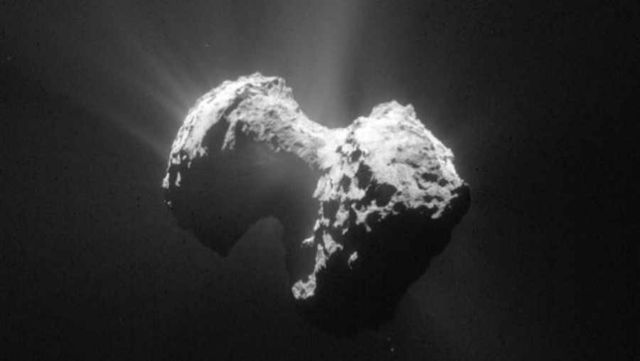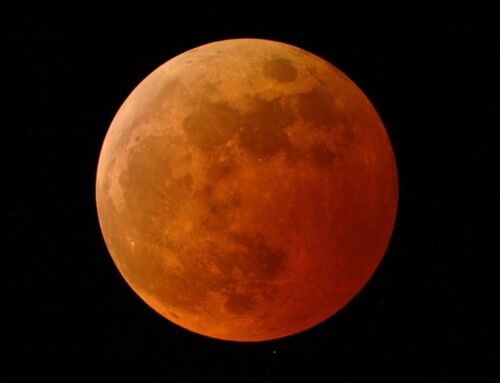Philae lander that was presumed lost, just been found and this is the extreme environment where is going to die, along with its parent Rosetta spacecraft.
Philae Lander found on Comet 67P
In 2014, the Philae lander slowly descended from its parent Rosetta spacecraft to the nucleus of Comet C67/P Churyumov-Gerasimenko.
Top image credit ESA, Rosetta, MPS, OSIRIS; UPD/LAM/IAA/SSO/INTA/UPM/DASP/IDA/Navcam
Above image credit ESA
At the surface, after a harpoon malfunction, the lander bounced softly twice and eventually sent back images from an unknown location. Earlier this month, though, Rosetta swooped low enough to spot its cub.
Squeezing out unique scientific observations until the very end, Rosetta’s thrilling mission will culminate with a descent on 30 September towards a region of active pits on the comet’s ‘head’.
The region, known as Ma’at, lies on the smaller of the two lobes of Comet 67P/Churyumov–Gerasimenko. It is home to several active pits more than 100 m in diameter and 50–60 m in depth – where a number of the comet’s dust jets originate.
Sylvain Lodiot, ESA’s spacecraft operations manager, explains:
“Although we’ve been flying Rosetta around the comet for two years now, keeping it operating safely for the final weeks of the mission in the unpredictable environment of this comet and so far from the Sun and Earth, will be our biggest challenge yet.
We are already feeling the difference in gravitational pull of the comet as we fly closer and closer: it is increasing the spacecraft’s orbital period, which has to be corrected by small manoeuvres. But this is why we have these flyovers, stepping down in small increments to be robust against these issues when we make the final approach.”






Leave A Comment